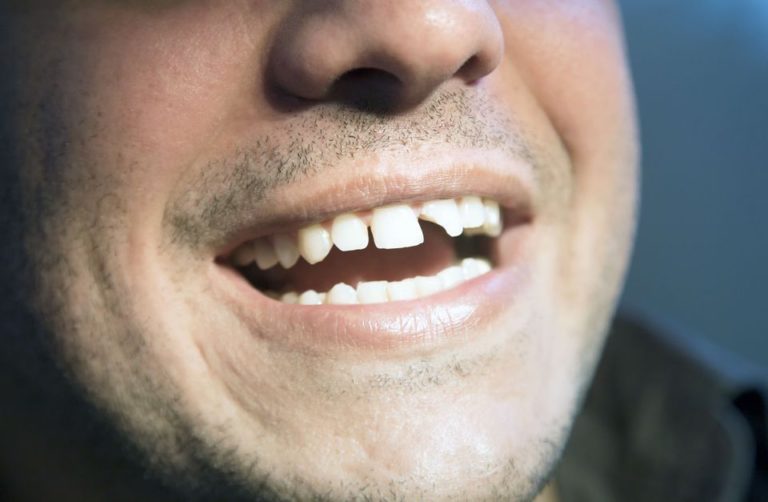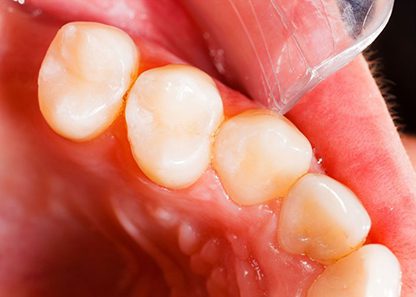Quality Cosmetic Dentistry Phoenix, AZ

In addition to offering an array of general and restorative dental services, our practice is dedicated to improving our patients’ quality of life and appearance through cosmetic dentistry Phoenix. Dr. Dovgan is experienced with performing cosmetic dentistry that enhance one’s smile without negatively affecting oral function. Our most popular cosmetic services include professional teeth whitening, tooth-colored fillings, cosmetic bonding, and porcelain veneer placement.
With cosmetic dentistry Phoenix, there is no smile that cannot be improved. We strive to help our patients look and feel their best. To reserve a smile makeover consultation with Dr. Dovgan, call our friendly team today.
Dr. John W. Dovgan can provide affordable, aesthetic dental bonding to refine the shape of your teeth and conceal minor imperfections.
Composite resin is also used for cosmetic bonding treatments. This treatment method is used to conceal imperfections on teeth such as chips, cracks, and stains. Applied to the teeth in liquid form and hardened with a curing light, composite resin can produce a more attractive looking smile.
Using composite resin, this cosmetic procedure can produce natural-looking results that match the shade of the rest of your smile. In just one visit to our Phoenix, AZ, office, Dr. Dovgan can transform your smile with this non-invasive cosmetic procedure.
We can customize the shade of the resin to precisely match the shade of the rest of your smile for a lifelike appearance.

Dental bonding can effectively refine the shape of your teeth to conceal a range of cosmetic concerns with natural-looking results.
What is Dental Bonding?
Dental bonding is a cosmetic treatment that uses composite resin to transform the size, shape, and color the teeth. We can customize the shade of the resin to precisely match the rest of your smile for a lifelike appearance. This treatment is ideal for concealing a range of cosmetic concerns, including:
- Oddly shaped teeth
- Dark dental stains that cannot be treated with teeth whitening
- Small gaps between teeth
- Teeth that are disproportionate in size or asymmetrical
- Cracks and chips
The composite resin can also strengthen and reinforce teeth that have sustained minor damage.
Choosing The Right Treatment
For any cosmetic procedure, you must be in good oral health. Although dental bonding can address many of the same concerns as porcelain veneers, there are a few instances in which bonding is a better solution. Since dental bonding does not require the removal of any enamel, it is more appropriate for patients with sensitive teeth due to enamel erosion. This quality also makes bonding a less permanent treatment, making it a better choice for patients in need of a temporary solution or who are not ready to commit to veneers. Bonding is also a more cost-effective solution than veneers, so it is preferred by patients on a limited budget.
Treatment Process
After an initial consultation to evaluate your candidacy for dental bonding and plan your treatment, Dr. Dovgan will select a shade of composite resin that will match the rest of your smile. Once he places a barrier between the teeth and gums, he can begin the resin application. He will expertly apply the material to each individual tooth, molding and shaping it as needed to achieve your desired results.
Using a curing light, he will harden the material, and then perform a final polishing to give the bonded teeth a lifelike appearance. The entire process can take as few as 30 minutes, depending on the number of teeth requiring treatment. At the conclusion of your appointment, you can leave our office with a smile free from imperfections that may have made you feel self-conscious.
Maintaining Results
Composite resin is susceptible to staining, just as your natural teeth are, so you will want to avoid foods and beverages that can tarnish your smile. Substances that cause significant staining include coffee and tea, dark sodas and red wines, berries, soy and tomato sauce, as well as cigarettes and other tobacco products. To avoid damaging your bonded teeth, do not chew on hard objects like ice or pen caps. You should also schedule regular dental checkups and cleanings to ensure longevity of your cosmetic treatment.
Porcelain veneers are cosmetic enhancements that are used to produce a complete smile makeover. These wafer thin, handcrafted pieces of porcelain are cemented over the outer surfaces of teeth. Tooth shaped and custom made, veneers produce a stunning yet natural looking smile by concealing flaws like crooked and misshapen teeth along with stains, chips, and cracks. Veneers are also referred to as instant orthodontics. This is because after receiving veneers, patients leaving our practice enjoy an instantly straight, bright, and beautiful smile.

Dr. John W. Dovgan can help you conceal minor dental imperfections with custom-made porcelain veneers, which can cover small chips, cracks, and stains to create a cohesive, aesthetic smile. All our veneers are uniquely designed and matched to your smile for seamless placement. In just two appointments at our Phoenix, AZ, office, Dr. Dovgan can create the flawless smile you have always wanted.
While porcelain veneers alone can produce stunning results, combining the treatment with other cosmetic procedures can have an even more dramatic impact.
A Versatile Cosmetic Treatment
Porcelain veneers are thin shells that fit over the front of a tooth. The porcelain material offers strength and durability, while also lending a brilliant and lifelike appearance to your smile. We can have the material custom-shaded to match your surrounding teeth, making them virtually undetectable. Patients can receive one veneer for a single affected tooth, or multiple veneers on visible teeth for a completely transformed smile.
Imperfections Veneers Can Address
As a versatile cosmetic treatment, porcelain veneers can address multiple imperfections. Flaws we can conceal with veneers include:
- Minor damage, such as cracks and chips in the front teeth
- Deep stains that cannot be addressed with professional teeth whitening
- Misshapen or disproportionately sized teeth
Sometimes referred to as “instant orthodontics”, porcelain veneers can also create the appearance of a straighter, gap-free smile.
Benefits of Porcelain Veneers
Porcelain veneers can completely transform your smile and can enhance your confidence as well. Since the procedure requires just two office visits, the treatment timeline is relatively short and involves little to no discomfort or a recovery. Veneers provide a great solution for patients with dental stains that do not respond to teeth whitening and is more durable than dental bonding. This treatment is also an excellent choice for adults who would prefer not to undergo extensive orthodontic work for minor misalignment issues or gaps.
While porcelain veneers alone can produce stunning results, combining the treatment with other cosmetic procedures can have an even more dramatic impact. Many patients choose to undergo both teeth whitening and porcelain veneer procedures as part of a smile makeover. This multi-step process allows us to customize the veneers to match a newly brightened smile, enhancing overall results.
What to expect?
When you first meet with Dr. Dovgan, he will evaluate your cosmetic needs. This consultation will include a thorough examination of your teeth and gums and an in-depth discussion to assess your overall goals. You will work together to design a treatment plan that will address your concerns and achieve your goals.
To begin your veneers process, Dr. Dovgan will slightly alter your teeth by removing a thin layer of enamel. This process ensures your veneers will not look bulky or unnatural. Once your teeth have been prepared, our team can take impressions, which we will use to expertly craft your restorations. Dr. Dovgan may apply temporary veneers to prevent any sensitivity or damage in between visits.
Within about two weeks, you will return to our office for the placement of your custom veneers. Dr. Dovgan will carefully apply them to your teeth ensuring that they meet your goals and maintain your proper bite. Once in place, you can return to your normal activities, enjoying a completely transformed smile.
Dr. John Dovgan in Phoenix, AZ, can transform your appearance with a smile makeover. This treatment can address a broad spectrum of dental issues, including stains, cracks, and gaps, with one comprehensive treatment. He will work with you to plan a customized treatment resulting in a new smile that you can be proud to share with everyone around you.
Since each patient is different, every treatment plan will be personalized to address their specific goals.

Fully Customized Care
Every smile makeover is completely tailored to your needs. It will consist of a combination of cosmetic procedures that work together to achieve your desired smile. A smile makeover can address a variety of dental imperfections, including:
- Discoloration
- Chipped or fractured teeth
- Misshapen or worn teeth
- Minor spacing or gaps between the teeth
- An uneven gum line or a gummy smile
- Slightly crooked teeth
Commonly Combined Procedures
Some of the most common procedures used in a smile makeover include:
- Porcelain Veneers: These thin, custom-made porcelain shells are attached to the front surfaces of the teeth to cover imperfections. Veneers are crafted from high-quality dental materials that provide natural-looking results.
- Tooth-colored Fillings: Composite resin can be used to fill cavities in a way that matches your natural dental tissue, providing attractive and natural-looking results. This resin can also be used to conceal chips, cracks, or stains during a treatment called dental bonding.
- Teeth Whitening: Wine, tobacco use, and certain medications can all cause the teeth to become stained. For a dazzling and brilliant smile, patients can take advantage of professional teeth whitening. At our practice, we offer both in-office and take-home treatments.
- Dental Crowns: Used for a variety of purposes, dental crowns are tooth-shaped restorations that can be used to support damaged teeth or give teeth more proportionate dimensions. In some cases, we can provide same-day crowns using our fast, precise in-office technology.
Smile Makeover Candidacy
If you have healthy teeth and gums, and simply want to improve the aesthetics of your smile, a smile makeover could be the right solution for you. However, if you have serious dental issues such as decay, periodontal disease, or severe misalignment, these will need to be addressed first. During your initial consultation, Dr. Dovgan will help you determine the most efficient and cost-effective way to achieve your aesthetic goals.
Maintaining Your New Smile
Once you have the smile you want, you will need to take special care to prolong your results. To protect your beautiful new smile, you should:
- Avoid staining agents, such as tea, coffee, red wine, and soda
- Not smoke or use other tobacco products
- Always attend your routine dental appointments
- Practice good oral health care habits such as brushing twice and flossing once daily
If you have questions or concerns, our staff is always happy to provide you with further recommendations.
Your Financing Options
Dental insurance does not cover smile makeovers. Dr. Dovgan is proud to offer financing through CareCredit® and Lending Club. Our friendly staff will explain your options and help you find a payment solution that works for your budget.
Store bought whitening products cannot stand up to the effectiveness of a professional teeth whitening treatment. Using prescription bleaching solution and intense LED lighting (to deepen and accelerate the stain removing process), an in-office whitening treatment can brighten one’s smile about eight to ten shades, on average. After treatment, our patients enjoy an instantly brighter, whiter smile with little to no tooth sensitivity. For patients who want to whiten their teeth in the comfort of their own home, we also offer custom at-home whitening kits. Professional whitening is more than effective; it is safe.
Teeth whitening (or bleaching) is a simple, non-invasive dental treatment used to change the color of natural tooth enamel and is an ideal way to enhance the beauty of your smile.
Because having whiter teeth has now become the number one aesthetic concern of most patients, there are a number of ways to whiten teeth. The most popular method is using a home teeth whitening system that will whiten teeth dramatically. Since teeth whitening only works on natural tooth enamel, it is important to evaluate replacement of any old fillings, crowns, etc. Replacement of any restorations will be done after bleaching so they will match the newly bleached teeth.
Teeth whitening is not permanent. A touch-up may be needed every several years, and more often if you smoke, drink coffee, tea, or wine.
Reasons for tooth whitening
- Fluorosis (excessive fluoridation during tooth development).
- Normal wear of outer tooth layer.
- Stained teeth due to medications (tetracycline, etc.).
- Yellow, brown stained teeth.
What does tooth whitening involve?
This type of teeth whitening usually requires two visits. At the first appointment, impressions (molds) will be made of your teeth to fabricate custom, clear, plastic, trays.
At your second appointment, you will try on the trays for proper fit, and adjustments will be made if necessary. The trays are worn with special whitening solution either twice a day for 30 minutes or overnight for a couple of weeks depending on the degree of staining and desired level of whitening. It is normal to experience tooth sensitivity during the time you are whitening your teeth, but it will subside shortly after you have stopped bleaching.
You will receive care instructions for your teeth and trays, and be encouraged to visit your dentist regularly to help maintain a beautiful, healthy, white smile.
Traditional fillings were made from a metal compound called amalgam. While this compound effectively protected damaged tooth structure from cavity-causing bacteria, it was dark and unnatural looking. As a remedy to the conspicuous nature of amalgam, our dentist offers tooth-colored (white) fillings. White fillings are made from a compound of durable plastic mixed with glass called composite resin. This compound can be tinted to match natural tooth structure. Composite resin allows our patients to enjoy discreet and natural looking dental work that will not be detectable to others.

After you have suffered from cavities, Dr. John W. Dovgan can provide durable tooth-colored fillings that match the rest of your smile and protect the remaining structure of your tooth. These restorations are professionally shaped and applied for long-lasting results. As a minimally invasive solution, tooth-colored fillings preserve more of your tooth, which is better for your oral health long-term. Dr. Dovgan can expertly place these restorations during a single appointment at our Phoenix, AZ, office.
Dr. Dovgan can match the shade of composite resin to the rest of your tooth and smile, making your tooth-colored fillings virtually undetectable.
What Are Tooth-Colored Fillings?
Dental fillings are used to address teeth with minor decay or damage. When cavities are caught early on, Dr. Dovgan can effectively treat the tooth with a filling, avoiding the need for more costly and invasive restorations like a dental crown. While amalgam is still a common materials for fillings, today, a tooth-colored options are available, including composite resin. This material is made is a highly specialized substance of glass and plastic compounds that is metal-free, durable, and safe.
Benefits of Composite Resins
Composite resin is the material Dr. Dovgan uses for dental fillings, as it offers numerous advantages over the metal alternative. Unlike metal fillings, which contain mercury, composite resin is non-toxic. It also strengthens and reinforces the tooth, rather than weakening it over time as metal fillings do. Because these fillings are smaller, they require less alteration of your healthy tooth.
The material offers aesthetic benefits as well. Dr. Dovgan can match the shade of composite resin to the rest of your tooth and smile, making your tooth-colored fillings virtually undetectable. Not only can you enjoy a stronger, healthier smile, but you can also maintain its aesthetic appearance.
What is the Treatment Process like?
The dental filling process is relatively simply and takes just one office visit to complete. After Dr. Dovgan has evaluated your teeth and identified minor decay, he can begin the treatment process. To start, he will remove the decayed or damaged pieces of your tooth. He uses conservative techniques to preserve as much of your natural tooth as possible. Once your tooth is prepared, he will apply the composite resin in layers, using a curing light to harden the material.
Dr. Dovgan will make minor adjustments to ensure the filling feels comfortable and does not adversely affect your bite. When finished placing the filling, we will polish the composite resin to provide a lifelike sheen. In a single appointment, you can leave our office with a healthy, restored smile.
Caring For Your Fillings
Composite resin is a durable material, but to ensure its longevity, you must take appropriate preventive measures. Maintain a diligent oral hygiene regimen of brushing twice per day and flossing once a day. Avoid using alcohol-based mouthwashes, as these can cause the material to soften over time, making the filling less effective.
Chewing on hard materials, such as ice or pen caps, or biting your nails, is not recommended. These actions can damage both your filling and your natural teeth. To maintain the filling’s natural color, limit your intake of stain-causing foods and drinks like tea and coffee. It is also essential that you keep up with your regular dental visits and cleanings to avoid the chance of future decay.
